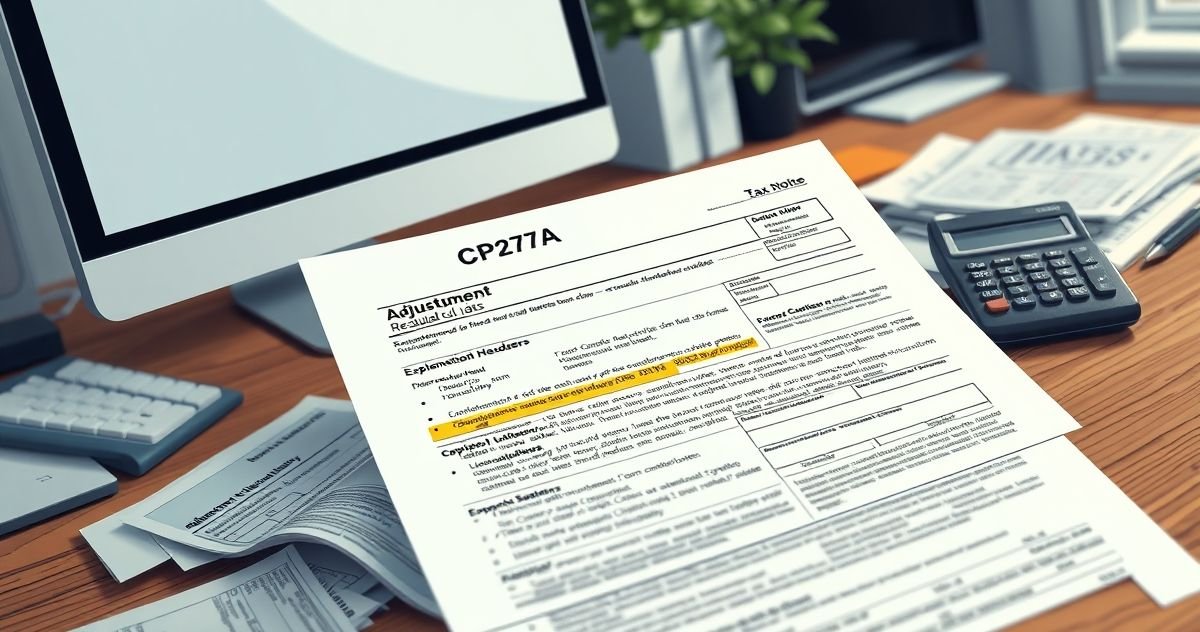Understanding the CP276A Notice
The CP276A Notice is an essential communication tool utilized by the Internal Revenue Service (IRS) to notify taxpayers about significant changes in their tax accounts, particularly related to employer quarterly tax returns. This notice serves as a critical mechanism to correct discrepancies or misreporting in payroll taxes, fostering compliance and helping avoid potentially costly penalties.
Primary Purpose of the CP276A Notice
At its core, the primary purpose of the CP276A Notice is to alert employers about corrections made to their quarterly tax filings. Usually, these corrections arise when reported figures conflict with information from third-party sources, such as W-2 or 1099 forms submitted by your employees or contractors. Having accurate tax returns is crucial, as it directly affects the withholding and payroll tax liabilities of the business and ensures all employees’ contributions are accurately accounted for.
Key Features of the CP276A Notice
- Adjustment Summary: The notice will provide a detailed account of the specific adjustments made to the taxpayer’s account, pinpointing the discrepancies and explaining the exact changes.
- Explanation Headers: Sections usually include concise explanations for each adjustment, enhancing a taxpayer’s understanding of the underlying reasons.
- Recalculated Liabilities: The notice calculates any adjusted amounts owed or refunds due as a consequence of reconciled discrepancies.
- Next Steps: Instructions for the taxpayer if further action is required, including how to contest inaccuracies if they exist.
Filing and Compliance Requirements
Receiving a CP276A Notice suggests that there may have been an oversight or error in previous quarterly tax returns, necessitating immediate attention. Taxpayers should:
- Review the Notice Carefully: Cross-reference the adjustments with your records to ensure accuracy. The stability of your business’s finances could be significantly affected by these corrections.
- Correct Open Returns: If discrepancies span multiple periods, consider reviewing other quarterly returns to prevent a chain of errors.
- Comply with Payment Deadlines: If a balance is due owing to adjustments, adhere to the specified timelines to avoid accruing interest or penalties.
- Contact the IRS for Clarification: It is advisable to reach out to the IRS if there is disagreement with any outlined adjustments, ensuring a comprehensive clarification process is undertaken.
Penalties and Consequences for Non-compliance
Ignoring a CP276A Notice exposes employers to several risks, such as:
- Compounding Penalties: Not correcting discrepancies or failing to pay any newly assessed balance can escalate penalties related to underpayment.
- Accrued Interest: Unpaid balances will attract interest, increasing the debtor’s liabilities over time.
- Legal Enforcement: Persistent non-compliance can lead to enforcement actions including liens being placed on business assets or, in extreme cases, levies against business bank accounts.
- Increased Audit Likelihood: Failure to heed IRS communications increases the potential of triggering a full-scale audit, which can be an extensive and invasive procedure.
Importance in Tax Compliance and Resolution
The issuance of a CP276A Notice should be perceived as an opportunity to remedy discrepancies efficiently and without conflict. It plays a pivotal role in maintaining your business’s integrity in tax matters. Here’s why compliance is non-negotiable:
- Proactive Error Correction: Post-receipt actions on the CP276A can preclude future issues and maintain tax filing accuracy.
- Minimize Financial Impact: Addressing account balances promptly saves businesses from small oversights spiraling into major financial headaches.
- Facilitate Truthful Reporting: Enhances your business’s reputation by ensuring the reports you submit match federal records.
- Enable Strategic Financial Planning: Knowledge of adjustments and compliance requirements assists in budgeting for potential tax liabilities.
Conclusion
The CP276A Notice is more than a regulatory formality; it’s a compass guiding you through the complexities of tax compliance. By understanding its nuances, embracing the detailed requirements, and addressing any adjustments swiftly, you avoid unnecessary financial penalties and uphold your business’s fiscal responsibility. Consistent compliance not only fortifies your standing with the IRS but also affords peace of mind, enabling you to channel focus into other facets of your endeavor.
